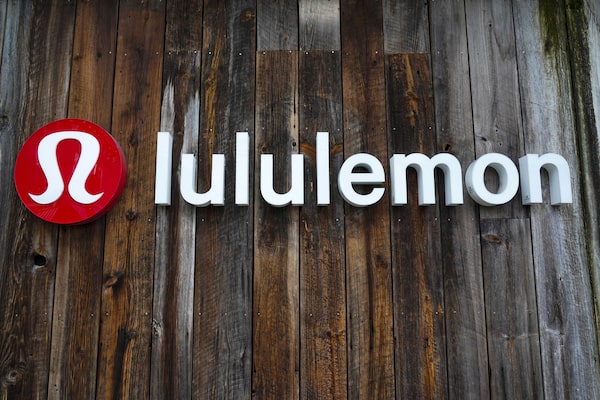
A Lululemon store in Pittsburgh, Pa., on Jan. 12, 2022.Gene J. Puskar/The Associated Press
Shares in Lululemon Athletica Inc. LULU-Q were down about 15 per cent in afternoon trading Friday as investors reacted to lower revenue projections and a U.S. slowdown.
The Vancouver-based athletic apparel retailer’s fourth quarter, which ended Jan. 28, brought US$669.5 million in earnings, up from US$119.8 million a year earlier.
However, the company estimates its fiscal 2024 revenue will range between US$10.70 billion and US$10.80 billion. Analysts on average had expected US$10.90 billion, financial markets data firm Refinitiv said.
The projections came as Lululemon chief executive Calvin McDonald lamented a sluggish U.S. market.
“As you’ve heard from others in our industry, there has been a shift in the U.S. consumer behaviour of late, and we’re navigating what has been a slower start to the year in this market,” he told analysts Thursday.
The retailer has also noticed an increase in younger shoppers, which necessitate smaller sizes and covet a wider selection of colours that weren’t always on hand.
“Sizes zero to four is something we’re chasing into. Colour, where we had colour, it performed well, but honestly, we just did not have enough,” McDonald said.
John Kernan, an analyst with TD Cowen, suspected rivals were making the sector “as challenging as ever” for Lululemon, too.
“U.S. consumer softness could partially be attributed to increased competition from upstarts Alo and Vuori,” he told investors in a note.
Alo is a Los Angeles-based purveyor of yoga apparel and other athleticwear that has pushed more aggressively into the Canadian market recently. Vuori, from San Diego, Calif., also makes clothing suited to recreation and has been rumoured to be interested in going public this year.
But McDonald argued Lululemon has been strong even in the face of heightened competition.
The company has focused on innovating with various fits and fabrics, has expanded into menswear and footwear and has a sense of “agelessness,” he said.
“Mom, daughter and grandma can be shopping in the brand and are actually advocates of the brand to the others, and I think that’s rooted in the notion of the solutions that we offer and provide for,” he said.
“That stack, when I go through the competitor list, I don’t see anyone that compares to that.”
And there is still more room for Lululemon to grow, he maintained.
This year, the retailer plans to add 35 to 40 net new company-operated stores with many coming in markets outside North America where Lululemon isn’t widely known.
“Our brand awareness remains low across most markets, which represents a significant opportunity for us to attract new guests,” he said.
Lorraine Hutchinson, an analyst with BofA Global Research, suspected the U.S. woes Lululemon has experienced would be remedied soon by expansion efforts and product advancements.
In early February, the company launched its first footwear collection for men, which has been well-received across North America and China, and new golf products will likely drive sales also, she noted.
Women will also see new fabrics used in yoga and training garments along with new silhouettes in the company’s Align line.
“Lululemon stands out versus peers with a robust pipeline of innovative fabric, styles, and categories,” Hutchinson concluded in a note to investors.